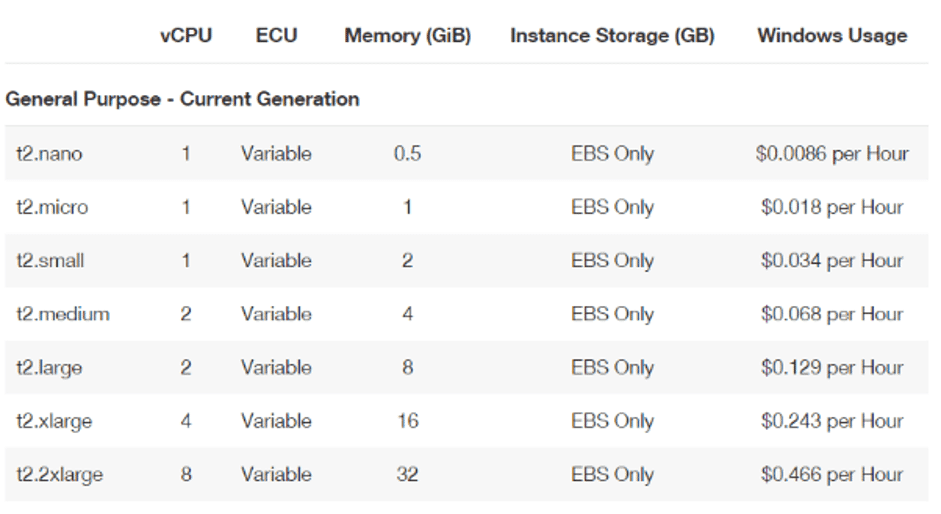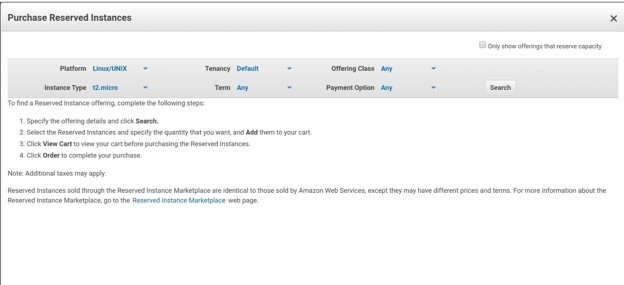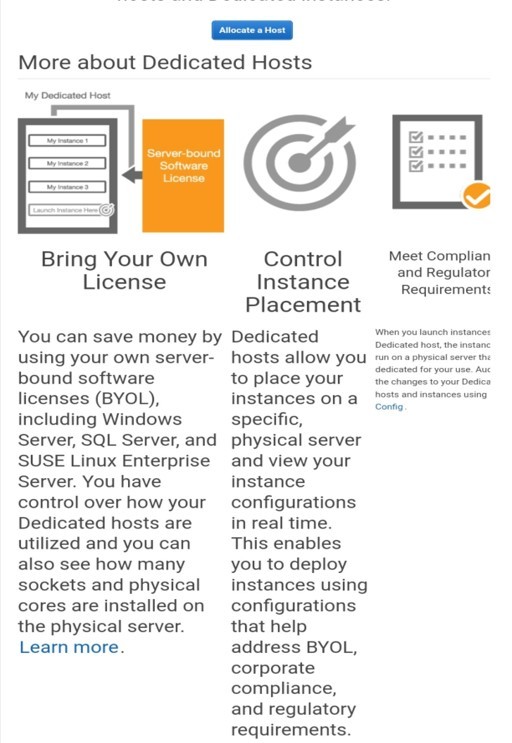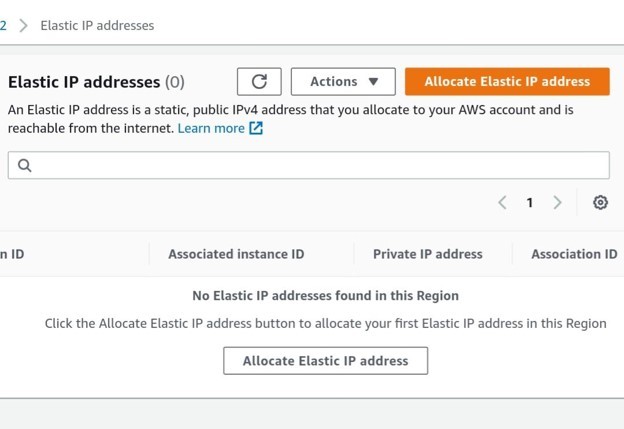Amazon EC2 Pricing Model
Distinct kinds of services are the reason for having a variety of pricing models. For example, Amazon EC2 pricing depends on the instance type, while the Amazon Aurora database service takes into consideration charges for data input or output and storage.

Amazon EC2 Pricing Model
What are some pricing models for Amazon EC2?
There are four Models of Pricing for Amazon EC2 instances: On-Demand Instances, Reserved Instances, Spot Instances, and Dedicated Hosts.
You can analyze & calculate different models using our custom EC2 pricing calculator below
- Compare on demand cost vs reservations options
- Find out total cost of ownership over years
- Determine breakeven point where on demand instance cost exceeds your reserve instance cost
On-Demand Instances
Users pay for computing capacity per hour or per second, given which instances they run. It does not require any longer-term commitments or upfront payments. The users can increase or decrease their compute capacity as their application demands, with only having to pay the specified hourly rates for the instance they choose to utilize.
- On-Demand Instances are best used for:
- Users prefer the low price and flexibility of EC2 without any upfront payment or long-term commitments
- Applications having spiky, short term or fluctuating workloads that cannot be intervened
- Applications that are being created or tried on EC2 for the very first time
Spot Instances
Those Instances grant the users ability to request spare Amazon EC2 computing capacity for a total of up to ninety percent off the On-Demand price.
- Spot Instances are best used for:
- Applications with flexible start and end times
- Applications with feasibility at very cheap computing charges
- Users having high necessity computing requirements for a wholesome of additional capacity
Amazon EC2 places this price and it changes periodically depending on the supply and demand accompanied by the Spot Instance capacity. In case the users’ maximum bids exceed the current Spot price, their bid request will be granted, and their instances will run till they either decide to terminate them or the Spot price exceeds their maximum bid.
EC2 Reserved Instances

AWS EC2 Pricing Model – EC2 Reserved Instances
Those Instances provide users with a great discount of up to 75 percent, in comparison with On-Demand Instance pricing. Also, upon the assignment of Reserved Instances to a specific Availability Zone, they allow a capacity reservation, granting the additional user confidence in their ability to launch instances when required.
Applications having known usage should go with Reserved Instances because they can provide greater cost efficiency in comparison to On-Demand Instances.
Reserved Instances are best used for:
- Steady-state usage applications
- Applications with reserve capacity requirements
- Clients who can remain using EC2 for more than a one or three-year period in order to reduce their total computing costs
EC2 Dedicated Hosts

AWS EC2 Pricing – EC2 Dedicated Hosts
It’s a physical EC2 server made specifically for the utilization of the user. Those hosts can help the users lessen costs by allowing them to use their own server-bound software licenses, such as Windows Server, SQL Server, and SUSE Linux Enterprise Server, and can also help them meet compliance requirements.
Per-second billing
With the launching of Amazon EC2, the ability to use an instance for an hour and only pay for that hour was of utmost importance. Nowadays, a lot of clients utilize EC2 to perform many work tasks in a short period, even minutes or seconds. Per-second billing was announced in 2017 for the utilization of Linux instances over On-Demand, Reserved, and Spot Instances.
Likewise, provisioned storage for EBS volumes is priced in one-second increments. Per-second billing is cost-effective. It’s generally efficient for resources that have periods of low and high usage, like development and testing, batch and data processing, analytics and gaming applications.
How to Estimate Amazon EC2 Costs?
The following factors should be taken into consideration when estimating the cost of using Amazon EC2:
1. Pricing model:
On-Demand Instances give you the ability to pay for computing capacity by the hour with no minimum commitments required. Reserved Instances grant you the possibility to place a low one-time payment, or no payment, for every instance you want to reserve and, in turn, get a huge discount on the hourly usage charge for that instance. Spot Instances give the ability to bid for free EC2 capacity.
2. The number of instances:
Multiple instances of EC2 and EBS resources can be provisioned with the aim of handling peak loads.
3. Load balancing:
An Elastic Load Balancer may be utilized for the distribution of traffic among EC2 Instances. The amount of data that the Elastic Load Balancer processes and the number of hours it runs affect the monthly cost.
4. Clock hours of server time:
Charges are made to resources while they are running. For example, from the period that instances are launched till they are stopped or from the period Elastic IPs are allocated till they get de-allocated.
5. Detailed monitoring:
Amazon CloudWatch can be used for monitoring your EC2 instances. Basic monitoring is enabled by default. To get a fixed monthly rate, you can choose detailed monitoring, which gets seven preselected metrics recorded once every minute. Charges are made to Partial months at a per instance-hour rate.
6. Elastic IP addresses:

AWS EC2 Pricing – Elastic IP addresses
Only one Elastic IP (EIP) address can be associated with a running instance for free.
7. Instance type:
A wide variety of instance types are provided by EC2 and configured to go with different use cases. The types of instances comprise changing combinations of storage, networking capacity, CPU and memory and give you the freedom to select the suitable mix of resources for each of your applications. Every instance type has one instance size at least, providing you with the ability to scale your resources to the needs of your target workload.
8. Operating systems and software packages:
OS charges are found in instance prices unless you wish to get your own licenses. No additional licensing costs are needed to run the following commercial operating systems: SUSE Enterprise Linux, Oracle Enterprise Linux, Red Hat Enterprise Linux, and Windows Server.
AWS made it simple for you by grouping up with IBM, Microsoft and several other vendors so you can run commercial software packages, like Microsoft SQL Server on EC2 Instances. AWS doesn’t provide commercial software packages where you need to get a license from the vendors. If you have an existing License, you can also bring it to the cloud through specific vendor programs like Microsoft License Mobility Through Software Assurance Program.
Auto Scaling:
It automatically alters the number of EC2 instances in your deployment in accordance with the conditions you place. This service requires no other payment than the Amazon CloudWatch fees.
See Also
AWS purchasing optionsCompare on demand cost vs reservations options